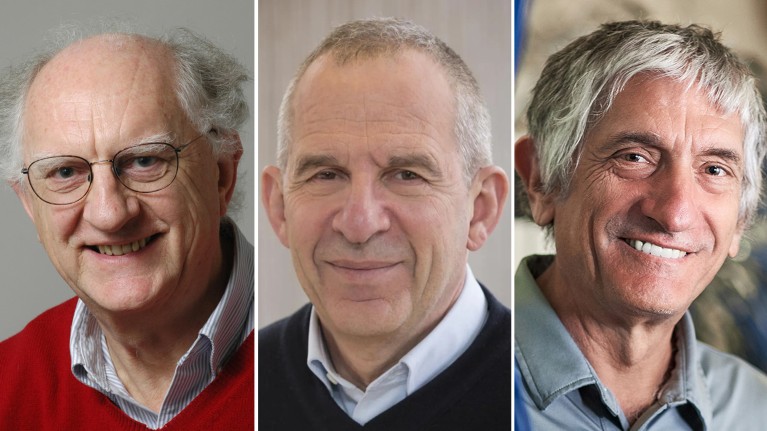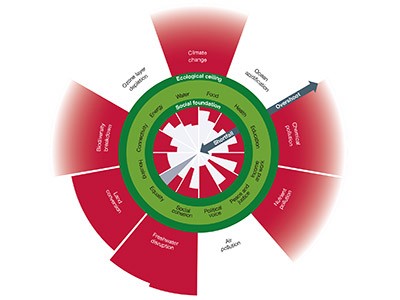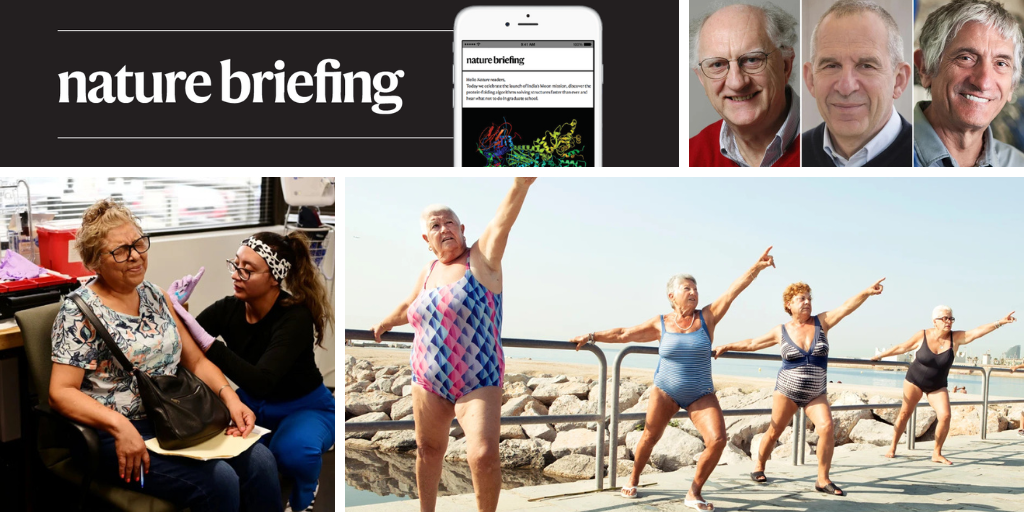You have full access to this article via your institution.
Hello Nature readers, would you like to get this Briefing in your inbox free every day? Sign up here.

John Clarke, Michel Devoret and John Martinis revealed quantum physics on a macroscopic scale. The work was a milestone for the development of superconducting quantum circuits.Credit: UC Berkeley; Yale Engineering; Rocco Ceselin for Nature
Physicists John Clarke, Michel Devoret and John Martinis have won the Nobel Prize in Physics for demonstrating quantum physics on the macroscopic scale. The trio created an experiment in which quantum tunnelling could be observed in a special circuit made with two superconductors separated by a thin barrier, known as a Josephson junction. “Observing quantum phenomena in a ‘dirty’ macroscopic circuit still seems surprising to me today,” says experimental physicist Nathalie de Leon. “The real reward is to write a paper that lots of people read,” says Martinis. “And even better, that it’s generated this large scientific endeavour with thousands of people working on superconducting qubits.”
News
A group of US researchers, physicians and public-health specialists, many of them volunteers, have launched a project to review the scientific literature to guide the immunization recommendations that professional societies issue to clinicians. The Vaccine Integrity Project’s review follows changes to the US Advisory Committee on Immunization Practices, which issues vaccine recommendations for the US population. Earlier this year, US health secretary Robert F. Kennedy Jr fired the entire panel and hand-picked 12 new members. “I really believe in the importance of having an independent, unbiased group of people look at the data,” says infectious-disease physician Caitlin Dugdale, who volunteers for the project.
Mouse brain neurons can ‘communicate’ with one another through tiny tubes. Using a combination of super-resolution microscopy and machine-learning techniques, researchers identified very short, thin tubes between dendrites, the branched tips of nerve cells. The team found that calcium ions can pass through these tubes — transmitting an electrical signal from one cell to the next — and that amyloid-β, a protein associated with Alzheimer’s, could also fit through. This could suggest the tubes have a role in the progression of the disease.
Features & opinion
Cardiologist Eric Topol’s Super Agers offers an optimistic review of the cutting-edge approaches to tackling the myriad diseases that cut human lives short. But under the administration of US President Donald Trump, funding for much of the research Topol explores — including, notably, mRNA technology — has been slashed since the book was written. Some science books might quickly become outdated because of the fast pace of research, writes geneticist Coleen Murphy in her review. “Super Agers could face the opposite problem,” she says.
Picture a doughnut-shaped region that represents a goldilocks zone of human prosperity and ecological vigour. Each slice of the doughnut represents a ‘planetary boundary’ — an influential concept that defines the limits of what Earth can support. Use too much — overflow the doughnut — and our planet becomes uninhabitable. Too little, and you sit in the doughnut hole, where human needs are not met. Researchers have created a new version of this ‘doughnut framework’ with 35 indicators of social shortfall and ecological overshoot. The result captures true prosperity better than global gross domestic product (GDP) does, argue the authors — and an accompanying editorial in Nature agrees.
Read more: End GDP mania — how the world should really measure prosperity (Nature editorial | 5 min read)

The revised doughnut framework — here showing 2022 data — reveals a modest achievement in reducing human deprivation over the 2000–2022 period, while global GDP more than doubled and ecological overshoot increased at a breakneck pace. The richest nations, with 15% of the global population, contribute more than 40% of annual ecological overshoot, whereas the poorest, with 42% of the global population, experience more than 60% of the social shortfall. (Nature | 45 min read)
See a large version of the image here. (A. L. Fanning & K. Raworth/Nature)


